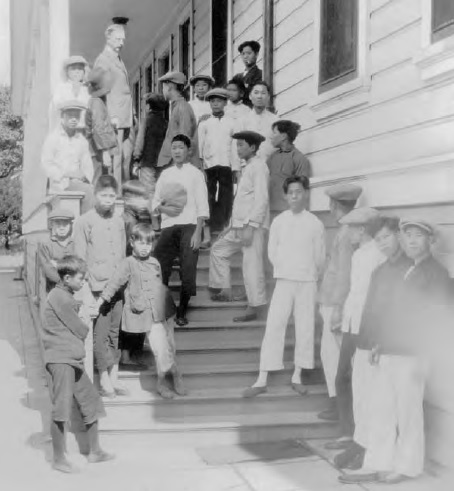
Japanese immigrants awaiting processing at the federal government's immigration reception center on San Francisco Bay's Angel Island during the 1920's. Courtesy of the National Archives and Records Administration
From 1885 to 1924, about 180,000 Japanese immigrated to the United States. In 1924 Congress passed the Immigration Act blocking additional immigration to the US. The first generation of Japanese immigrants (Issei) created a diverse community but faced racial segregation and were prevented from becoming citizens or owning land. The second generation (Nisei) did not face these same restrictions but still endured prejudice and were generally viewed as unwelcome aliens.

Japanese immigrants awaiting processing at the federal government's immigration reception center on San Francisco Bay's Angel Island during the 1920's. Courtesy of the National Archives and Records Administration

Immigration from Japan chart. Courtesy of the Department of Homeland Security